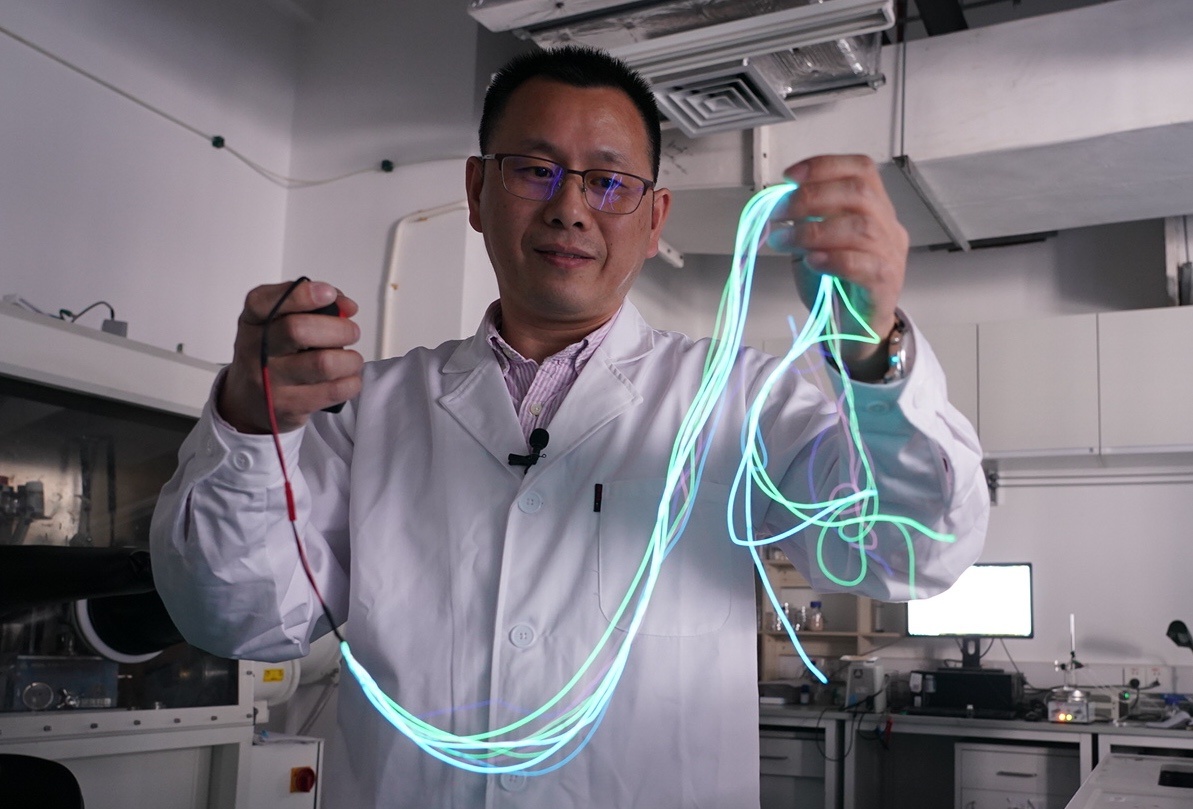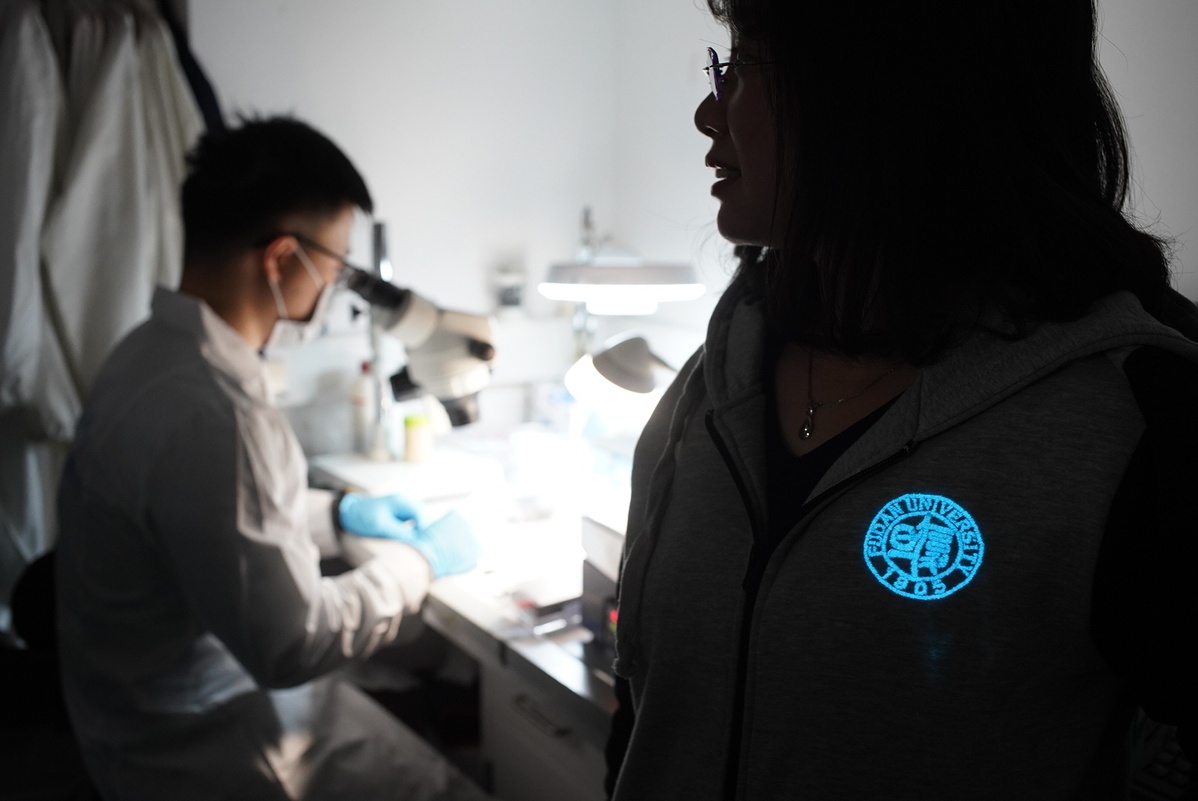
Peng Huisheng, a leading researcher from Fudan University's department of polymer science demonstrated a polymer composite fiber loaded with luminescent active material developed by his team. (Photo: China Daily)
Shanghai researchers have developed a new type of fully flexible textile with a display system that may allow people to receive and send messages, read information, and take notes on their clothing in the near future.
Through independent research and development, the research group from Fudan University's department of polymer science created two novel functional fibers: a polymer composite fiber loaded with luminescent active material and a transparent conductive polymer gel fiber.
In the process of fabric weaving, the interweaving of the warp and the weft can naturally form a dot matrix similar to the pixel array on a digital display screen. Through this process, the two fibers can form an electroluminescent unit.

Peng Huisheng, a leading researcher from Fudan University's department of polymer science demonstrated a polymer composite fiber loaded with luminescent active material developed by his team. (Photo: China Daily)
"Clothes woven with this new material can closely follow the irregular contours of the human body and are as light and breathable as ordinary fabrics, ensuring comfort," said Peng Huisheng, a leading researcher on the team and a professor from the department.
Tests have shown that the textile can maintain a stable performance in display after repeated folding and stretching. "Its brightness and stability remained almost the unchanged after having been washed in a washing machine 500 times," said Peng.
A paper of their study was published in the United Kingdom-based journal Nature on Thursday.
Peng's team said that the textile can be used in various scenarios.
"For example, it can provide digital map navigation for bicycle riders through a fiber screen on their arms. It could also help deaf-mute individuals communicate display what they want to say when used in conjunction with devices that read their brain waves," Peng said.


